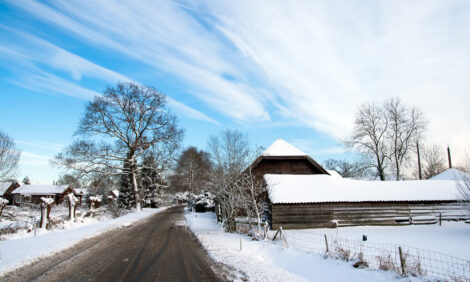



Improving Silage Quality Offers More Profitable Future for Milk Producers
UK - Forage-based dairying underpinned by quality grass silage offers many mainstream UK milk producers a profitable future and a solution to volatile market conditions.So said expert speakers representing Andersons, Ecosyl and Germinal at a farming industry briefing this month, where all agreed that opportunities to improve production from forage within current set-ups exist for many, without major investment.
Using The Andersons Centre’s Friesian Farm model to compare systems, Richard King, a partner in The Andersons Centre, demonstrated how a focus on quality silage allows significant cost reductions whilst maintaining relatively high yields, due to greater milk production from forage.
Both Ben Wixey of Germinal and Phil Jones for Ecosyl concurred, with Mr Wixey pointing to industry figures showing that milk from forage in the UK has actually been falling. Each therefore highlighted critical areas that could help to boost silage quality this season and allow more milk producers to reap greater benefits from their cheapest natural feed source – grass.
“First and foremost, it is vital that silage leys contain the best quality ryegrasses,” said Ben Wixey, “But whatever the state of your swards going into this current season, there is still a lot that can be done to maximise the feed value of grass silage.
“Simply cutting at the optimum stage of growth can mean a difference of several D-value points, raising the ME of the silage and boosting the milk production potential. Aiming for quality not quantity will more than likely mean lower bought-in feed costs next winter.”
Understand the biology of the silage-making process
Phil Jones, research and development manager for Ecosyl, agreed that producing higher quality silage is a key step to driving up milk from forage. That will require farmers to scrutinise every stage of their silage-making process, including the quality of the fermentation, to minimise feed value losses, he stressed.
“Making good silage isn’t all down to the weather,” said Mr Jones. “It is important that farmers really understand the biology of what is happening in the clamp.
“In a good fermentation there is a rapid domination by good bacteria to lower the pH, whereas in poorer silage, good and bad bacteria naturally present on grass compete, so fermentation is left far more to chance.
“Good bacteria convert the sugar in grass to lactic acid which produces the fastest pH fall and with no loss of dry matter, whereas in other types of fermentation other less effective products are also produced as well as carbon dioxide, which is effectively lost dry matter.
“Many farmers may be missing out on the benefits of producing a good fermentation because they don’t fully understand what adding lactic acid bacteria with a proven silage additive does.
“In trials, adding a specially-selected strain of lactic acid bacteria with a silage additive has not only produced a much quicker drop in pH in the important period of the first 24 hours after ensiling, but also improved digestibility and given an average extra 1.2 litres of milk per cow per day.”
Improve the raw material
Whilst these measures should help secure better quality grass silage this season, Ben Wixey added that improving the raw material would generate even better returns in future for a large majority of dairy farmers.
“Reseeding rates for UK grassland are far too low to maintain swards at their optimum performance levels,” he revealed.
“We estimate current reseeding rates are at around 2-3 per cent each year, which means many leys are being expected to perform well beyond the 8-10 years that we can expect sown species to remain, even under the very best management conditions.
“So in many cases, silage leys will contain large proportions of weed grasses, which yield less, are of lower quality, and do not respond as well to fertiliser as modern ryegrasses.
“Investing in more regular reseeding may seem like an added cost, which few will feel they can justify in the current climate, but the payback from grassland that is capable of delivering far higher yields of better quality, higher intake forage, will be achieved very quickly.
“Furthermore, when making the investment in reseeding, be sure you maximise the value by selecting the best available varieties from the independent Recommended List. Choose the best varieties for the purpose, and consider details like compatible heading dates within the mixture, as these small points can make a significant difference.”
This short and medium term focus on grass silage quality is something that is within the scope of the majority of UK dairy farmers, as is the forage-based system illustrated by the Andersons model.
“The forage-based model should not be confused with the grass-based system,” said Richard King.
“We recognise that the low input / low output extended grazing approach does not work for everyone, due to factors like soil type, farm layout or having the finance to convert.
“The forage-based model works for a year-round calving herd, with yields of around 8,250 litres/cow. The key to this system working is having sufficiently high quality silage to allow a reduction in concentrate feed costs and higher milk from forage.
"Under this type of system, forage costs will be higher than in the intensive system, but the savings in concentrate feed and also lower vet and med costs will more than compensate, converting a potential loss under current milk prices into a potential profit.”
TheCattleSite News Desk


